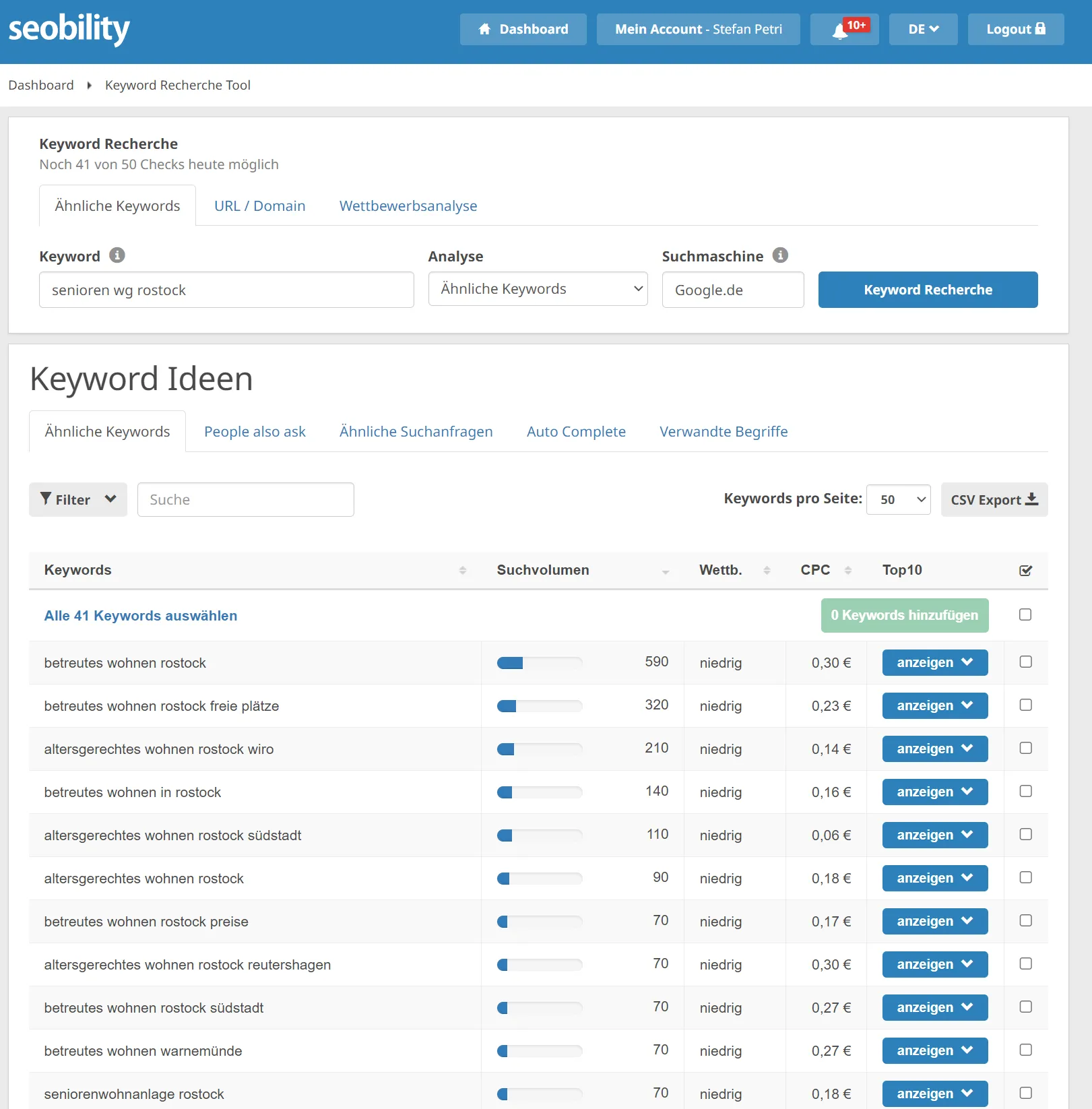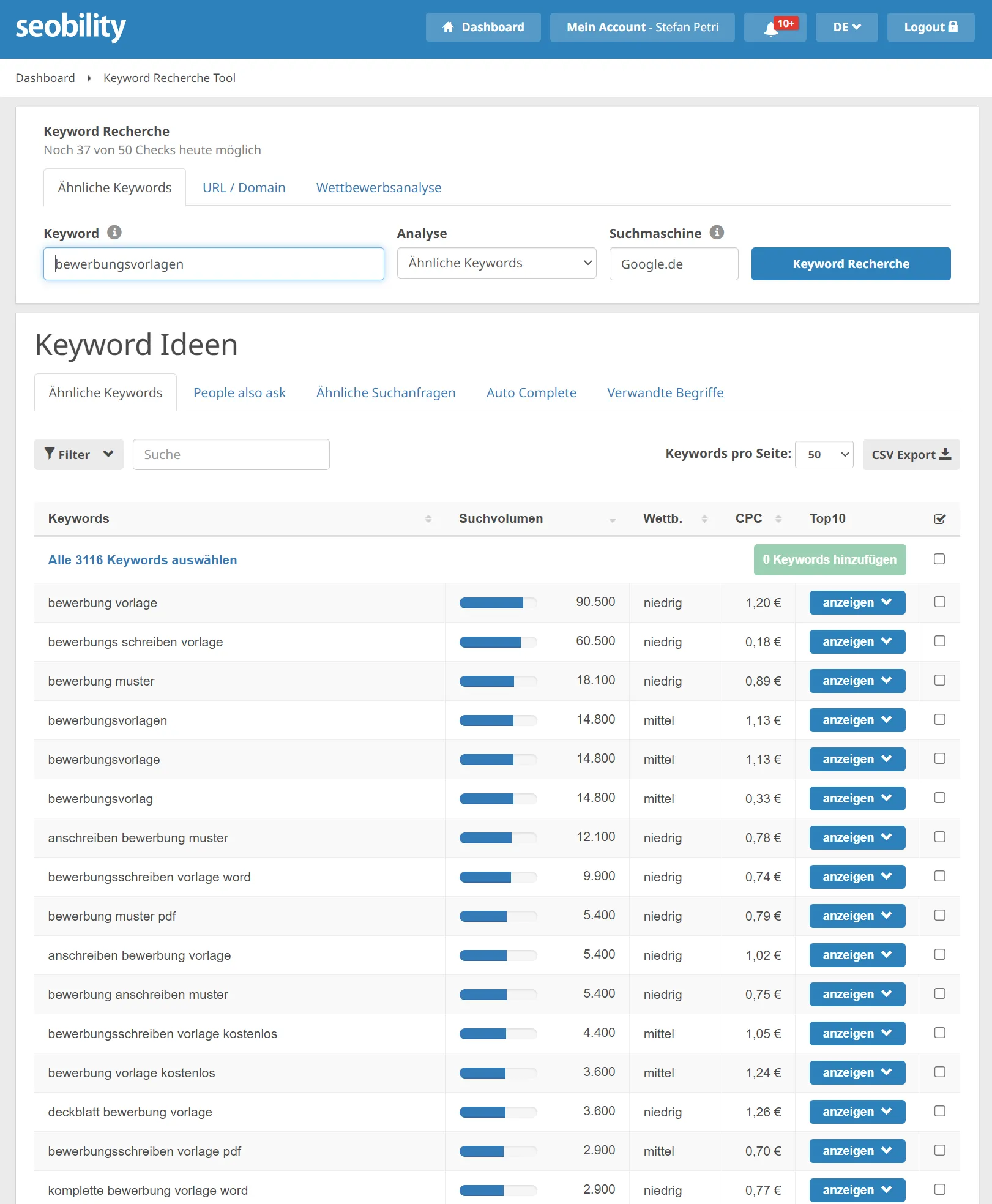The first quick steps in search engine optimization are often quality assurance at the on-page level. Classic errors and content-related, structural or technical errors are corrected. This is relatively quick and results in rapid scoring success ... and is therefore also fun.
If you look at the information architecture of a website, one step should actually come first. But in my experience, people want quick results first, which is why they work their way through the major mistakes before getting down to more concerted work. What do I mean? Optimizing the homepage and subpages for keywords that meet the highest possible user interest.
When we talk about a keyword, it is equated with the user's search term, whereby a keyword does not necessarily have to be just one word, but rather includes the words that the search query contains.
In principle, the aim is to meet the " real" search queries of users with a keyword that is as appropriate as possible , e.g. a keyword could also be "How do I create a homepage" - if that is what many users are searching for.
The fact is: even the best product and the best range of services will become a slow seller if nobody sees them. This is just as true in the supermarket around the corner as it is online. While offline the sorting on the shelves influences sales success, in the digital world the notorious ranking in the search engines is the measure of all things. If you don't take such a tactical approach to content maintenance , you end up with a website that may have been created and maintained to the best of your knowledge and belief, but still doesn't really serve user interest - in the case of stores, this can lead to hundreds of products and more being presented completely unoptimized and living out their existence as digital shelf warmers.
So what are the right keywords for a homepage and a subpage? What approaches are there for keyword research?
- Brainstorming (write down what comes to mind)
- Enter the first word in Google and see what Google suggests (also try: "car itself" etc.)
- Enter your own keywords into Google and see what the competition is doing
- Observe yourself in your Google searches. What do you enter? Learn from your own user behavior
- You can use Google's keyword planner
- There are also other research tools, such as the keyword research tool from Seobility
To get reliable answers to these questions, use a keyword research tool, whether it's Google's Keyword Planner or Seobility's tool. The results are similar.
You enter a word or a few word combinations to display keyword ideas for the topic - in other words, what people typically enter as a search term.
It also shows, among other things, how often a keyword is searched for on average per month and how strong the competition for it is. In other words, the two parameters provide information on how many people can potentially be reached with a keyword and how challenging it is to achieve a good ranking for the keyword in view of the competition.
Here is the result for "assisted living rostock".

In comparison, other obvious search terms such as age-appropriate living or senior housing are far behind.
We generally concentrate on keywords where competition is low. This is not always possible. Some topics, such as "health insurance", have so many providers vying for them that many keyword ideas are highly competitive. If this is the case, we naturally accept the challenge anyway. At the same time, we focus our attention on the monthly search queries. Of course, the higher the value, the more potential customers, the better. Conversely, however, this does not mean that the highest value is always the deciding factor. The priority is that the topic of the subpage is best described by the keyword.
In addition to these considerations, there is another aspect: it is not uncommon for a keyword to already be used for another product in online stores, for example. To avoid competing with ourselves, we then choose keyword alternatives where possible. Here is an example of the category for our application templates:
https://www.tutkit.com/de/vorlagen/bewerbungsvorlagen-download
We then use alternative terms for templates such as samples, add job titles, component terms such as cover letter, cover sheet, etc. and optimize these products precisely to cover the widest possible search volume spectrum with the keywords.

Finally, we also include the option of selecting several keywords for a product, whereby we generally limit ourselves to a maximum of three (you really shouldn't use more than three). However, this variant brings with it a whole new set of challenges when it comes to "building" the keywords into a product description in a meaningful way. Some word acrobatics have already led to head-shaking among human readers - an important experience.
This is how it looks in the product overview:

To summarize, the parameters by which we (currently) select keywords can be boiled down to the following five points:
- The keyword should describe the topic of the product or subpage in the best possible way.
- The competition for the keyword should be as low as possible.
- The average number of monthly search queries should be as high as possible.
- If possible, several products on a similar topic should not be optimized for the same keyword.
- Sometimes up to three keywords are combined. But no more, please!
In addition, the keyword does not mean that you only write your texts for this keyword. You should definitely also include synonyms (assisted living, senior living community, senior living communities, age-appropriate living, etc.) --> downstream you can even carry out a WDF-IDF analysis to see which words are used how often by competitor sites, which you can then also incorporate.


